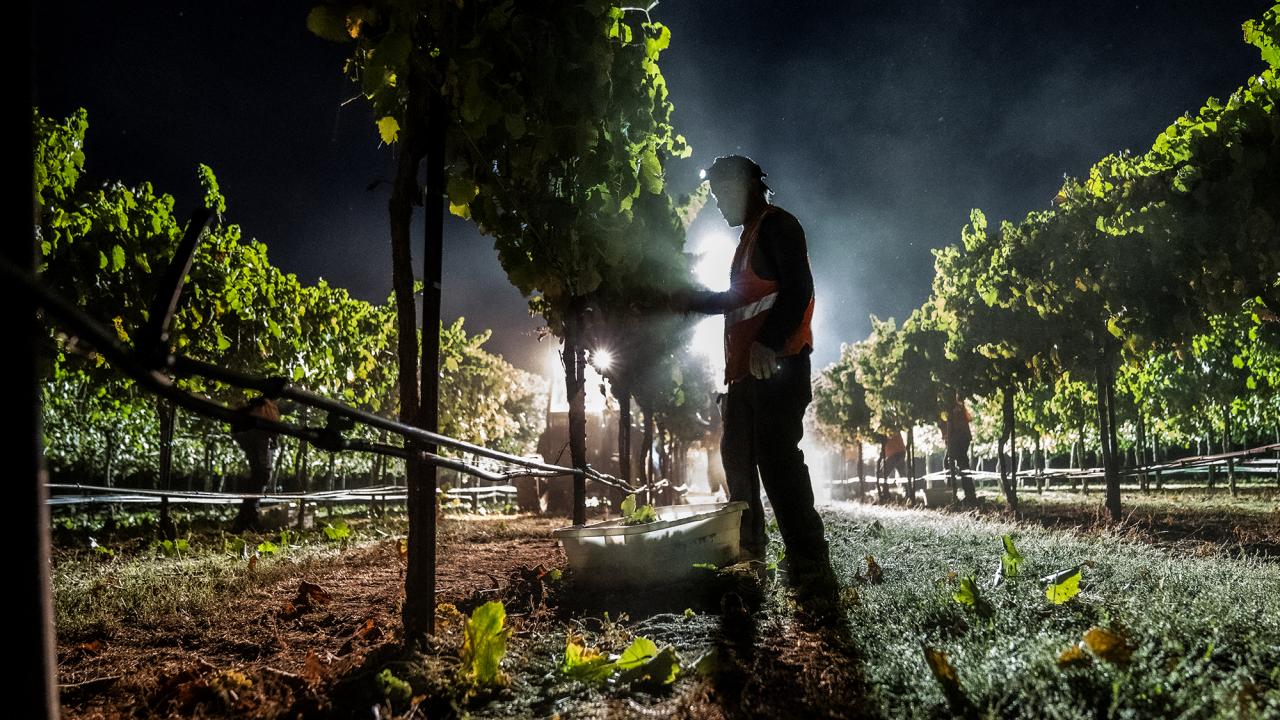
California Night Work Regulation Approved
In 2013, a lighting standard was proposed to improve field lighting and worker visibility for California agricultural field operations taking place between sunset and sunrise. After 6 years of stakeholder meetings and fiscal reviews, the Office of Administrative Law has approved the regulation, which will go into effect on July 1, 2020.
Basic Requirements
In a webinar hosted by the California Farm Labor Contractor Association on June 22, 2020, C. Bryan Little, Chief Operating Officer of Farm Employers Labor Service and Director of Employment Policy for California Farm Bureau Federation, discussed the basic requirements of the new regulation:
- Headlights for Trucks: Trucks are now included as field equipment that must be equipped with a head light illuminating at least 50 feet ahead.
- Rear Lighting for Self-Propelled Equipment: A rear light is required for self-propelled equipment (e.g. tractors, harvesters), in addition to the existing requirement for a front light illuminating at least 50 feet.
- Area Lighting: Area lighting must illuminate at least 30 inches above the floor/ground where an employee may walk or work and must be positioned to minimize glare.
- Task Lighting: Illumination levels for task lighting shall be measured at the task/working surface, in the plane in which the task/work surface is present. (See specific illumination requirements in table below.)
- High Visibility Clothing: The employer must provide and require workers to wear high visibility clothing (e.g. vests, shirts, or other).
- Pre-Shift Safety Meetings: Supervisory employees shall conduct a safety meeting at the beginning of each shift to inform employees of the location of the restrooms, drinking water, designated break areas, nearby bodies of water, and high traffic areas at each specific job site. If employees cannot name where these areas are located during a Cal/OSHA inspection, the training will be considered inadequate.
Illumination Requirements
Manufacturers rate lights in foot-candles, lux, and/or lumens.
- Foot-candle: brightness of a light measured one foot away from the light source
- Lumen: a measure of the total quantity of visible light emitted by a source per unit of time
- Lux: unit of measurement of light-level intensity, commonly referred to as “illuminance” or “illumination”; equal to one lumen per square meter
| Operations, Areas, Tasks | Minimum Illumination Required |
|---|---|
| Meeting, meal, and rest areas | 3 foot-candles |
| Outdoor agricultural operations (except where otherwise specified), such as walkways, restrooms, storage areas | 5 foot-candles |
| Task lighting for agricultural operations that involve the use of tools that can potentially cause cuts, lacerations, or punctures | 10 foot-candles |
| Task lighting for maintenance work on equipment | 20 foot-candles |
Additional Equipment
Any combination of hands-free portable personal lighting, equipment lighting, and/or area lighting is allowed to achieve the required illumination. For example, a typical head lamp, which can be purchased through brick-and-mortar (e.g. Grainger) or online (e.g. Amazon, Gemplers) suppliers may be adequate for either 5 foot-candles requirement for general lighting or 10 foot-candles for work with sharp tools.
The standard requires specific levels of light for specific tasks and situations. Employers should use a light meter to assure compliance where employees are working. Standard light meters measure light levels in foot-candles, lux, or lumens.
Cal/OSHA staff will use commonly available brands of light meters that can be purchased from various online and brick-and-mortar sources, such as:
- Sper Scientific Model # 840020
- Davis Light Meter Model # 401025
- Extech Model # 407026
Note: Documentation of light meter measurements for specific worker activities is recommended to demonstrate compliance with the regulation. Cal/OSHA will measure light levels per the illumination requirements in the table above.
